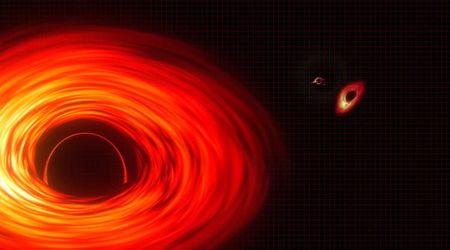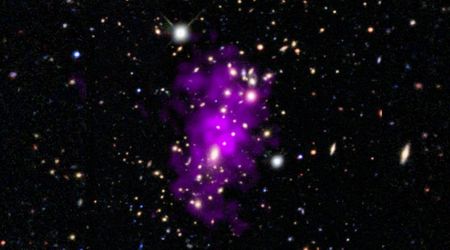Study by NASA and Oxford reveals Uranus possesses more internal heat than previously thought

Long considered an enigmatic anomaly in our solar system, Uranus may not be as internally cold as scientists once believed. Groundbreaking new research from NASA and the University of Oxford challenges decades-old assumptions, suggesting the ice giant generates its own internal heat, albeit at a lower rate than its planetary neighbors, per NASA.

For centuries, Uranus remained a distant point of light, only recognized as a planet in the late 18th century. Its unique characteristics, a sideways rotation leading to 42-year-long summers and an anomalous retrograde spin, have consistently defied easy explanation. Compounding this mystery, data from NASA's 1986 Voyager 2 flyby indicated an unusually cold interior, forcing scientists to rethink fundamental theories of planetary formation and evolution.
“Since Voyager 2’s flyby, everybody has said Uranus has no internal heat,” stated Amy Simon, a planetary scientist at NASA’s Goddard Space Flight Center. “But it’s been really hard to explain why that is, especially when compared with the other giant planets.” Previous projections of Uranus's internal temperature relied heavily on this singular Voyager 2 measurement. However, a collaborative effort led by Simon and a team of scientists has revised extensive historical data, employing advanced computer modelling techniques. Their findings, published May 16 in the Monthly Notices of the Royal Astronomical Society, reveal that Uranus does, in fact, produce some internal heat.

A planet's internal heat is typically gauged by comparing the energy it absorbs from the Sun to the energy it radiates back into space. Unlike Jupiter, Saturn, and Neptune, which all emit more heat than they receive (indicating internal warmth from their formation 4.5 billion years ago), Uranus appeared to be an outlier, seemingly emitting only what it absorbed. This led to hypotheses ranging from an exceptionally old planet to a catastrophic collision that expelled all its internal warmth.

“We thought, ‘Could it really be that there is no internal heat at Uranus?’” said Patrick Irwin, the paper’s lead author and professor of planetary physics at the University of Oxford. “We did many calculations to see how much sunshine is reflected by Uranus, and we realized that it is actually more reflective than people had estimated.” To determine Uranus's complete energy budget, researchers utilized an Oxford-developed computer model. This model integrated decades of atmospheric observations from telescopes like the Hubble Space Telescope and NASA's Infrared Telescope Facility, accounting for factors such as hazes, clouds, and seasonal changes that influence light reflection and heat emission, as mentioned on NASA's official site.
The study concluded that Uranus emits approximately 15% more energy than it receives from the Sun. This aligns with another recent NASA-funded study published July 14 in Geophysical Research Letters. While this confirms internal heat, Uranus still radiates significantly less than Neptune, which emits more than double the energy it absorbs. “Now we have to understand what that remnant amount of heat at Uranus means, as well as get better measurements of it,” Simon added. Unraveling Uranus's thermal history is not only crucial for charting the solar system's evolution but also for understanding the numerous exoplanets of similar size being discovered beyond our solar system.









